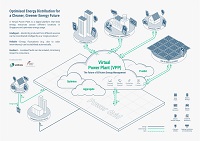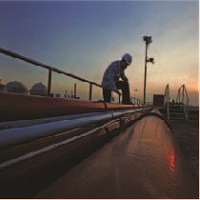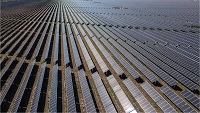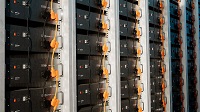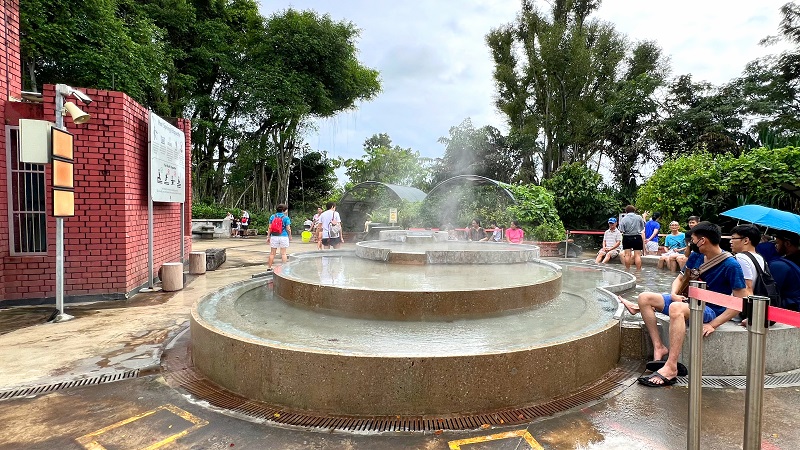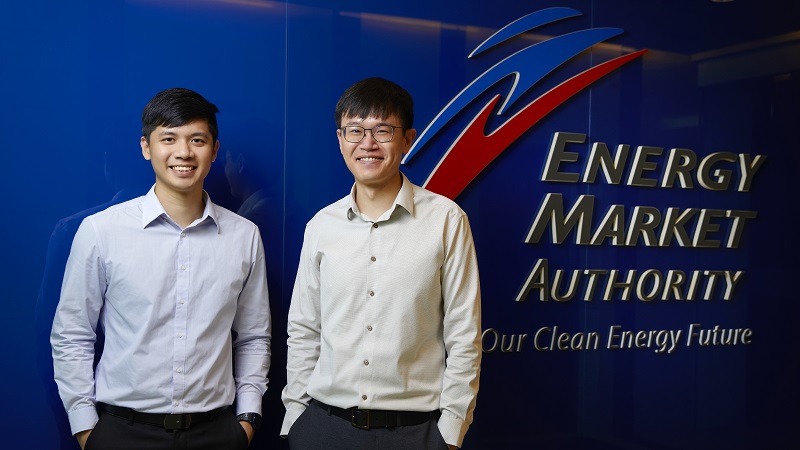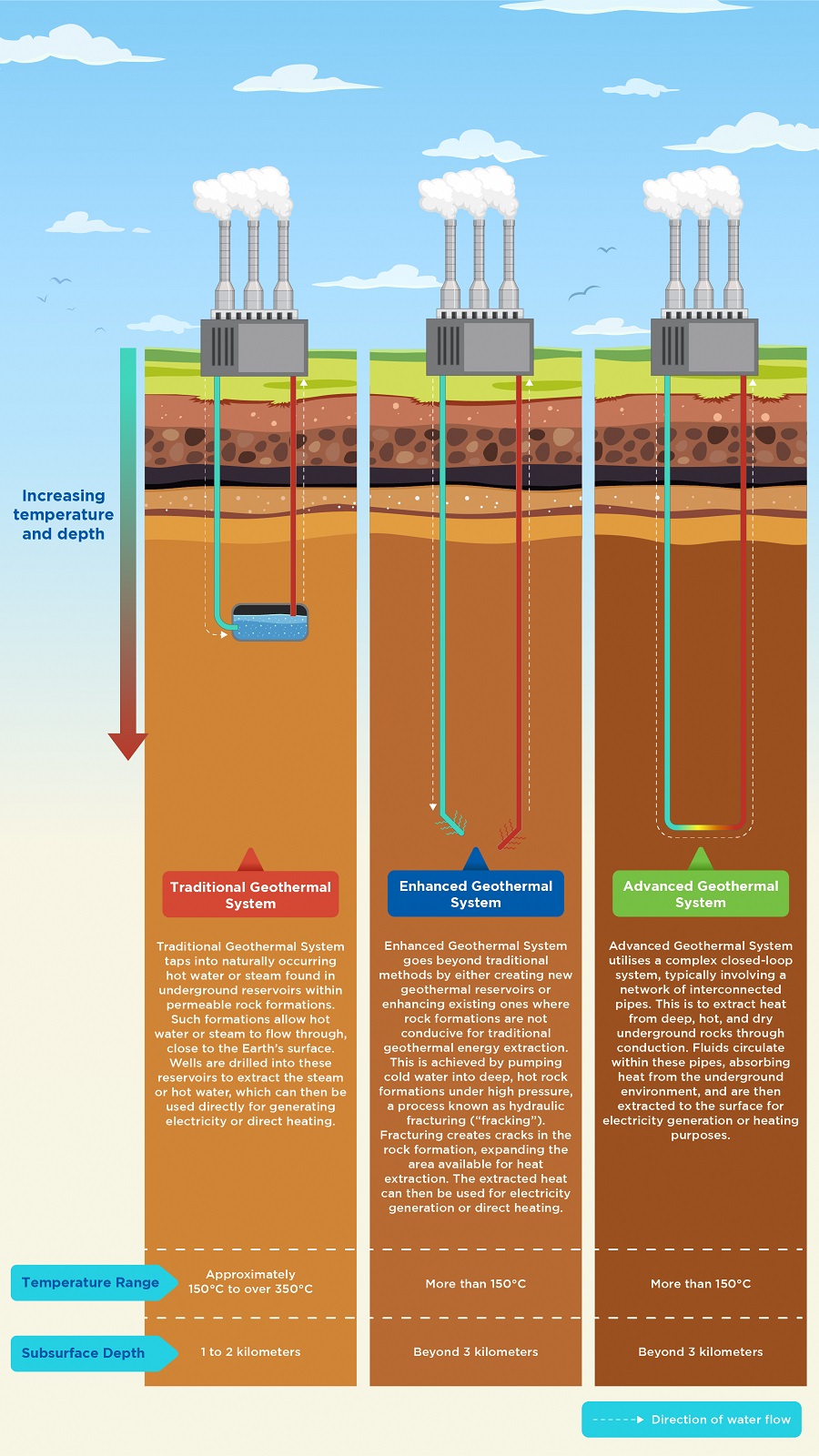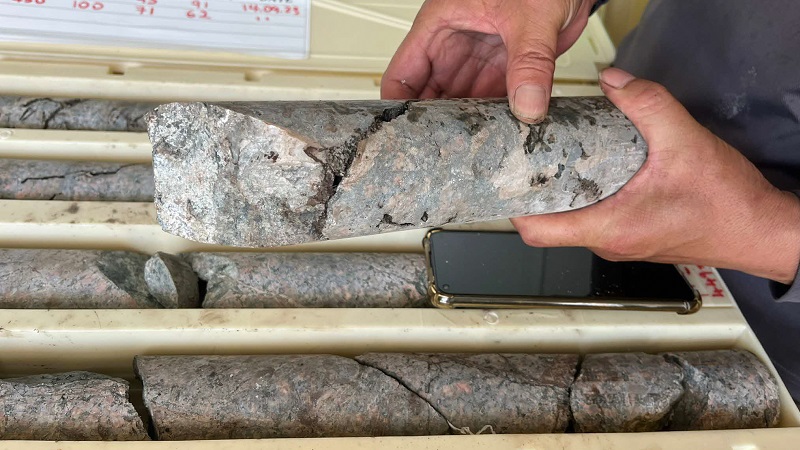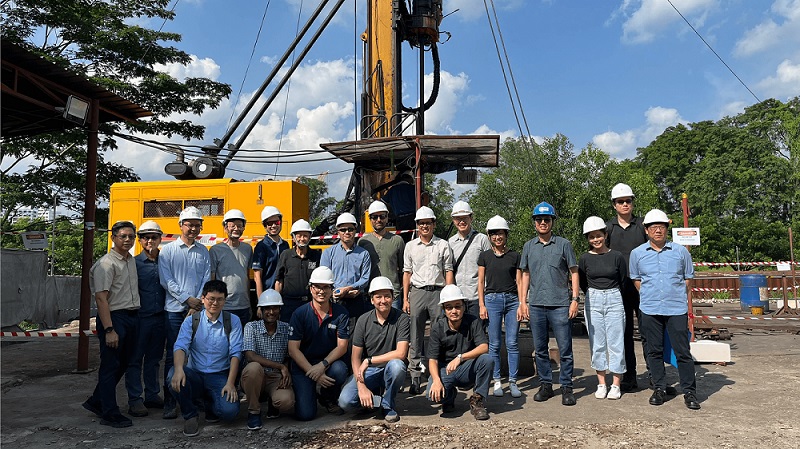Traditional geothermal energy systems rely on extracting heat from shallow underground reservoirs of hot water, where temperatures typically reach above 150oC, for power generation. However, in Singapore, temperature at locations such as the Sembawang hot spring, only range from 60oC to 80oC. This suggests that deploying such traditional geothermal systems is not feasible here.
As technologies develop, deep geothermal systems like the Advanced Geothermal System (AGS) and Enhanced Geothermal System (EGS) tap on heat from hot dry rocks found at depths beyond 3km, and at temperatures greater than 150oC. “The deeper we go, the higher the temperature. So it’s akin to having a more powerful and efficient engine for electricity generation,” Clarence elaborated.
“In the past, such deep geothermal systems were not economically viable due to their high costs. But over time, the drilling technology has been improving and this helps to reduce the cost of constructing such deep geothermal systems,” Bobby added.




